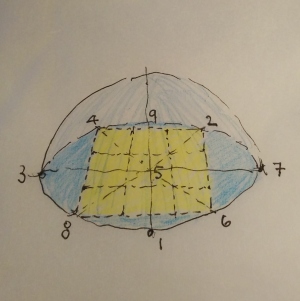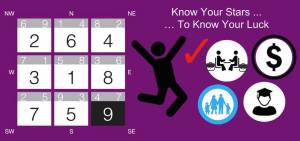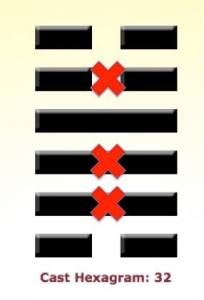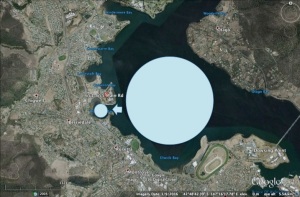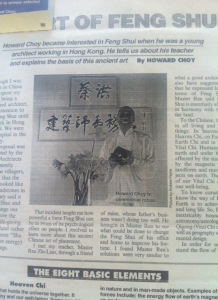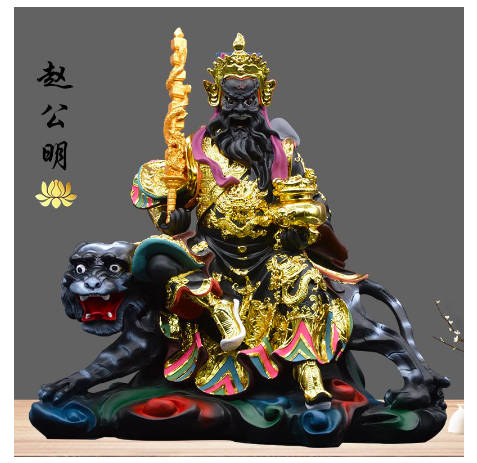From the way, Guo Pu defined the term Feng Shui in his Zang Shu or the Book of Burial (Translation by Stephen L Fireld):
‘The Classic says: Qi rides the wind and scatters, but is retained when encountering water. The ancients collected it to prevent its dissipation, and guided it to assure its retention. Thus, it was called fengshui.’
We can see Feng Shui puts a lot of emphasis on the idea of “Zang Feng De Shui” 藏風得水 (to store from the wind and obtain water) to gather the Qi to benefit a tomb or a dwelling and its occupant From this we can see Qi is an important concept in Feng Shui, yet very few people, including many Feng Shui practitioners, have a clear idea what is this Qi in Feng Shui.
With the advent of modern science, many Feng Shui theorists tried to use hard science to explain Qi, some think it is related to electromagnetism, while others to negative and positive ions and so forth, and the term “energy”, as used in science, is often equated to Qi, as though Qi can do work to fulfill our longings and desires, like wealth and happiness, with Feng Shui.
This sentiment is echoed in Dr. Jay Bulloch’s article “What is Qi?” (http://jaybulloch.com/articles/what-is-qi/#_ENREF_5)
“Most people in the West, including many authors, think qi means energy, but this “represents a basic misconception that is not supported by Chinese ancient sources” (Unschuld, 1985, p. 72). This common mistranslation has lead to many erroneous ideas and understandings with regards to Chinese medicine. The term qi is complex, multilayered, and at its core, profound. It is one of the most difficult terms in Chinese language to translate. Not only is there no equivalent word in the English language, there is also no all-encompassing, equivalent concept in Western thought or science.”
From my perspective, after studying and working with Feng Shui as a practicing Feng Shui architect, consultant and teacher for nearly 40 years, I think this is an inappropriate approach, because it is trying to explain a unique Chinese cultural heritage with a western world-view. To me, a better approach would be through a Feng Shui and a Chinese world-view, instead of a western paradigm. Look at Qi in Feng Shui not from a hard science point of view, but from a Chinese cultural and philosophical perspective instead.
Three assumptions are made in a Feng Shui paradigm, the first is everything under the sun, be it organic or inorganic, has Qi, the second is everything that has Qi has Yin and Yang and the third is because of this continuum, everything is interconnected. So right from the beginning the Chinese sees Qi as a continuum and as a component of Yin and Yang.
In p46 of Prof. Zhang Dainian’s “Key Concepts in Chinese Philosophy” (translated by Edmund Ryden, Foreign Languages Press 2002), he wrote from the Pre-Qi to the Han, Qi is understood as intimately associated with Yin and Yang and then he quoted an extract from a speech by the Grand Historiographer of Zhou, Boyangfu. Yin and Yang are the two aspects of Qi and when the Qi of Heaven and Earth is out of balance, then an earthquake occurs.
In Prof. Zhang’s 8 pages explaining the concept of Qi (p45 – p63), Edmund Ryden at the beginning of his translation, has summarized the professor’s scholarly work with his understanding of what is Qi and I think it is a very good explanation and it echoes with the practice of Feng Shui:
‘In popular parlance qi is applied to the air we breathe, steam, smoke, and all gaseous substance. The philosophical use of the term underlines the movement of qi. Qi is both what really exists and what has the ability to become. To stress one at the expense of the other would be to misunderstand qi. Qi si the life principle but is also the stuff of inanimate objects. As a philosophical category, qi originally referred to the existence of whatever is of a nature to become. This meaning is then expanded to encompass all phenomena, both physical and spiritual. It is energy that has the capacity to become material object while remaining what it is. It thus combines “potentiality” with “matter”. To understand it solely as “spirituality” would be wrong, just as it cannot be translated as “matter.’
If we can accept as its definition:
‘Qi is both form and formless “matter” and it’s potential to become while remaining what it is, thus Qi combines “potential” with “matter” ‘
then we can see Qi, as a therectical construct, is a mean for the Chinese to link the Yin with the Yang as a continuum that would connect the Heaven above, the Earth below and the Human in us, to look at our relationship with the environment we live in, which is essentially what we do in Feng Shui.
Sheng Qi is a result when Yin and Yang come together in a harmonious and balanced way, while the complementary opposite Sha Qi happens when Yin and Yang are out of balance and the life-enhancing Sheng Qi is prevented from taking place. That is what Gu Pu was referring to when he wrote, “To bury is to take advantage of the Sheng Qi” in the first line of this Zang Shu mentioned earlier.
He was not talking about taking advantage of some geodetic force in the ground, he was referring to finding a balance between Yin and Yang of all sorts in their myriad of correlations, like high and low, mountain and water, front and back, left and right and so forth, all the physical attributes that would make up the Form Feng Shui school. But if there is form and everything has Yin and Yang, then there is also the formless in Feng Shui and to study the formless, we have the Compass, or the Liqi Pai – the formless Qi-pattern school.
In the Liqi Pai, a Luopan compass is used to measure the directions of a house or a tomb. This measurement is then correlated to a Trigram and through the Trigram correlations or associations, the practitioner would “read” the Qi of the Trigrams, which eventually will correlated back down to the Five Phase relationships, and with the Five Phase (Wuxing 五行) – the five “matters” (in this case the 5 Qi correlations) of Water, Wood, Fire, Earth and Metal, and their potential to become, the practitioner can determine which relation is auspicious and which is harmful. As a result, we have the Wuxing Qi, or the Qi of the Five Phases to work with. Again, this Qi is not some sort of energy or force, but relationships that are either desirable or not, according to whether the relationship between the Five-Phase Qi is harmonious or out of balanced or otherwise.
Through this definition for Qi, we can also explain some of the unusual expression or mystical demonstrations of Qi we often see in Qigong and Kung Fu, a good example is the so-called Empty Force (Lingkong Jin 凌空勁) – the ability to move another person without touching that person. The so-called Qi (Jin is defined as dynamic Qi) is a continuum of Yin and Yang and a continuum needs a connection, so to demonstrate this Qi, one needs a sender and a receiver. When the student as a receiver, is under the influence of his or her master as the sender, then the Qi of mutual resonance can take place and the student gets pushed over. But if this teacher tries to push a stranger, who is not connected to the sender, or not able to receive his Qi (i.e. no mutual resonance), then if won’t work. Not knowing the true meaning of Qi and the working of Qi, we mistaken it as some sort of super-human power beyond our understanding.
The character for Qi is written with the radical “rice” below the radical for “vapour”. Rice is substantial while vapour is the opposite, when ric is cooked it sinks to the bottom while the vopou rises, so even the written word for Qi is associated with Yin and Yang. The term Feng Shui (wind and water) also expressed the same sentiment, with wind being the active and water being the passive agent in nature. Calligraphy by Wang Xi-Zhi (303-361 AD).
















































 .
.

